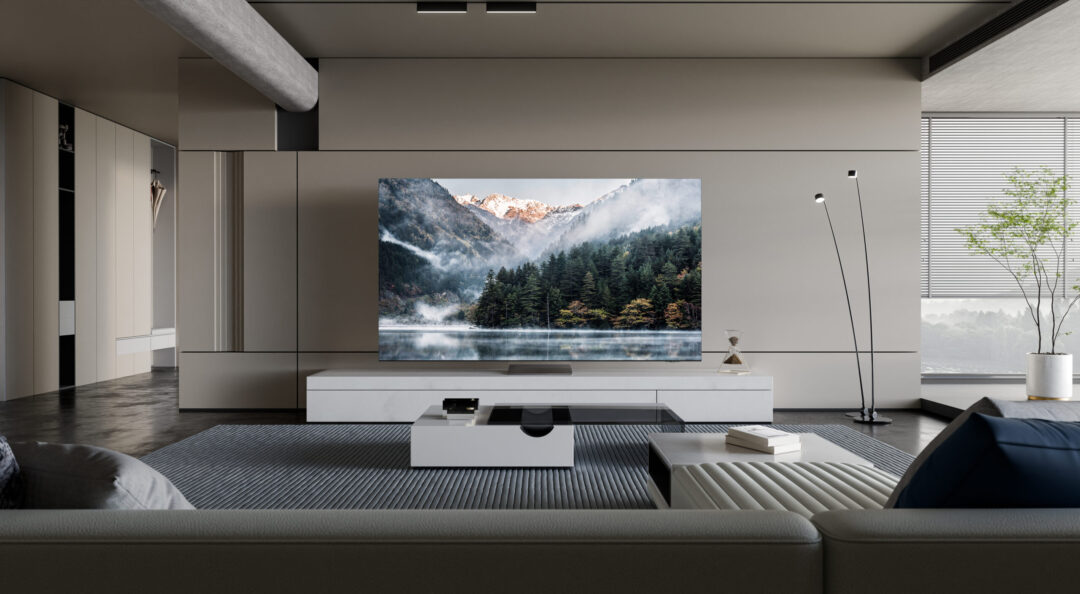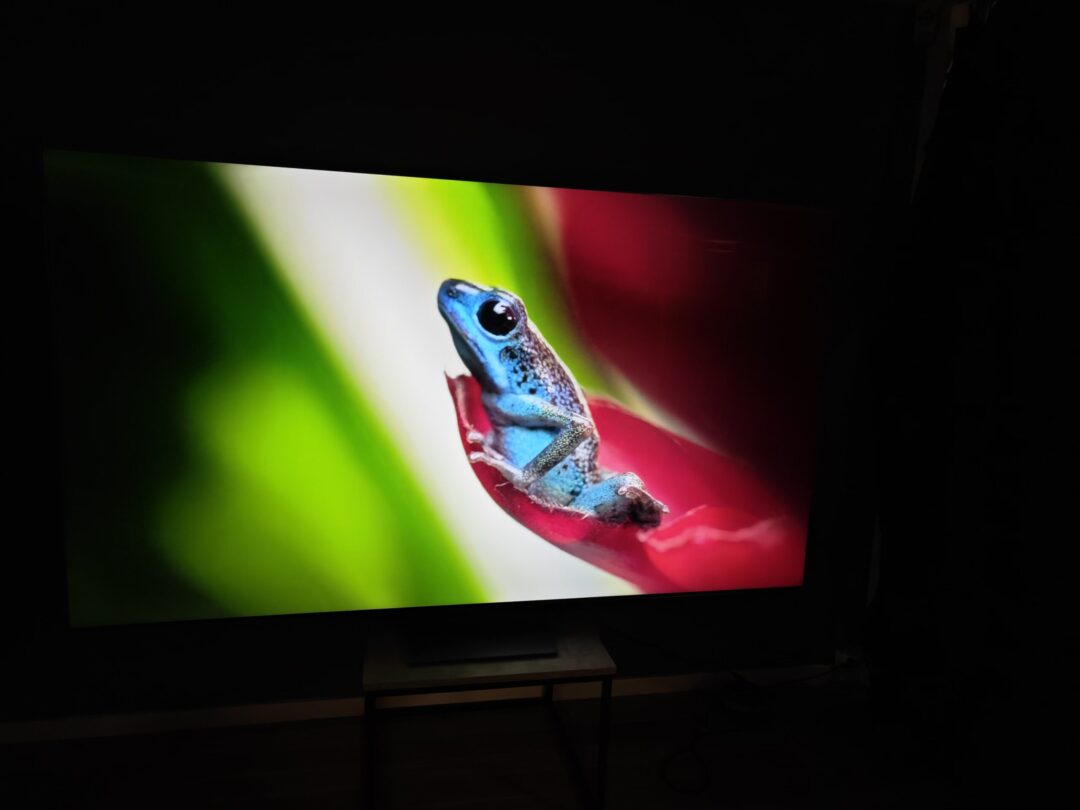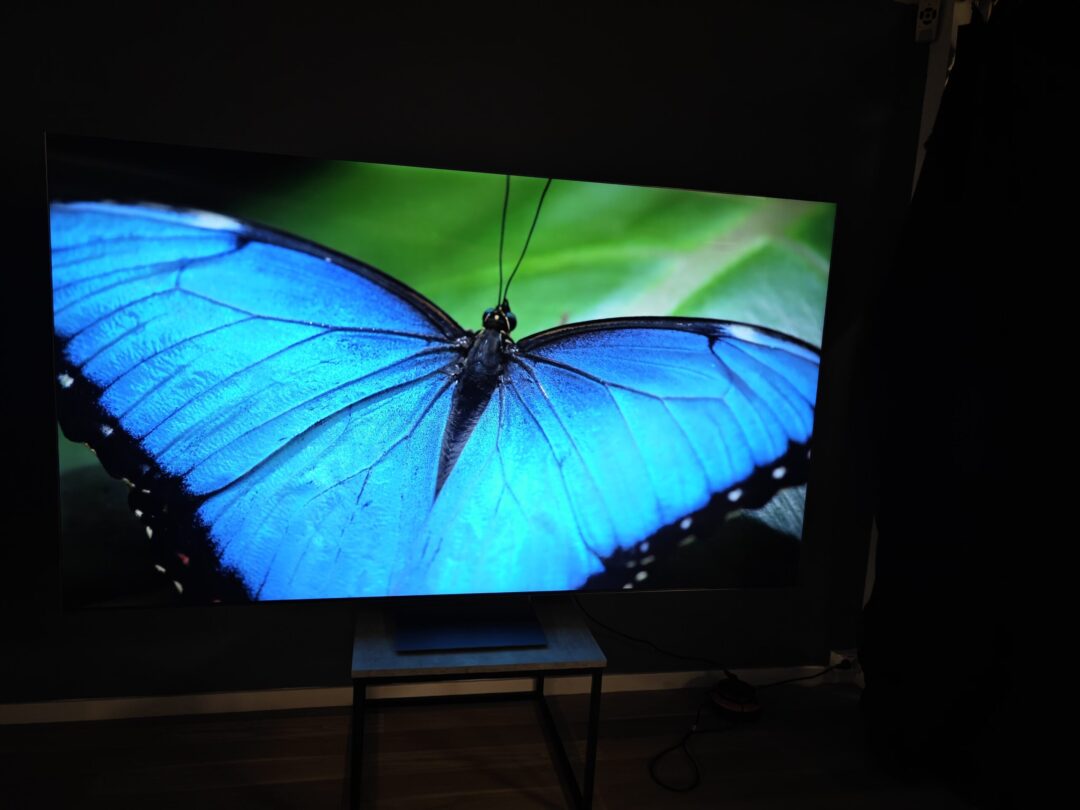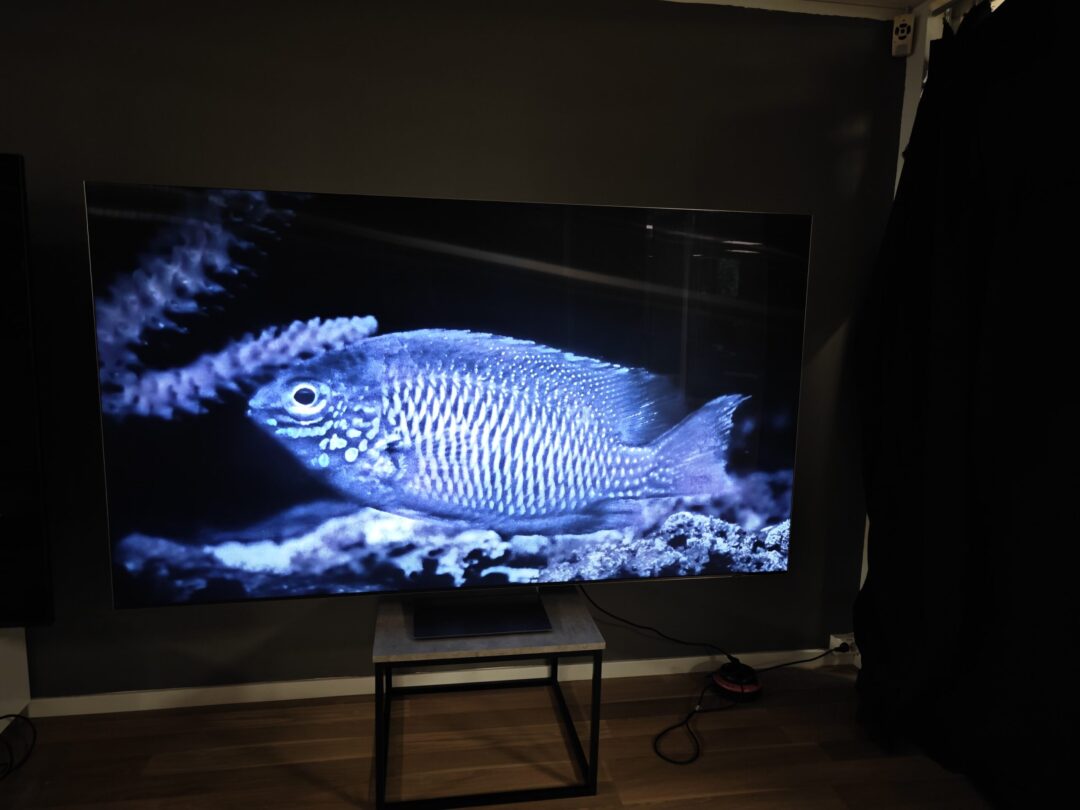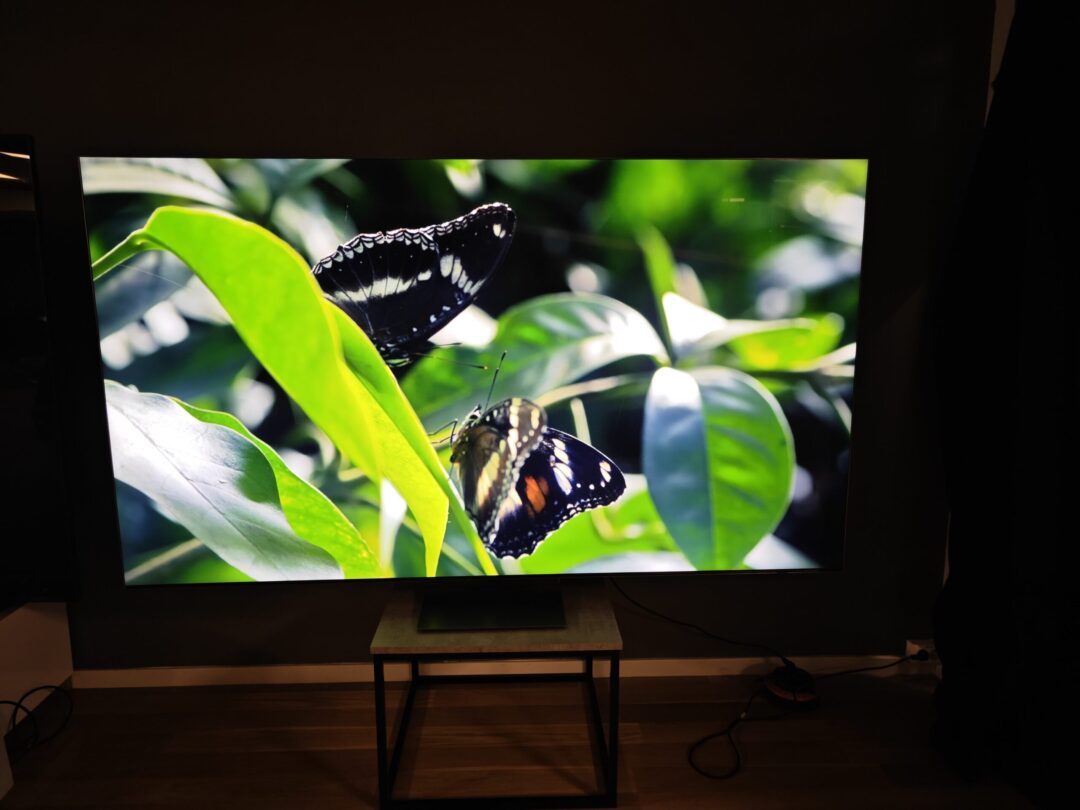The QN900D is the most powerful TV you can buy from Samsung this year. It’s the South Korean manufacturer’s official flagship model for 2024, surpassing both the S95D and QN95D in terms of design, screen technology and definitely price!
Here we are clearly in the high-end class with a slim and elegant metal frame, and inside sits a razor-sharp 8K display with a resolution of 7,860 x 4,320 pixels. It delivers an incredible picture depth that simply has to be experienced.
The QN900D also comes with some features that are exclusive to the 8K models. For example, only the QN900D (and its little brother QN800D) comes with Samsung’s most powerful video processor, the NQ8 AI Gen3, which is equipped with the latest AI enhancements. And this time it’s more than just buzzwords, but improvements you can actually see and hear.
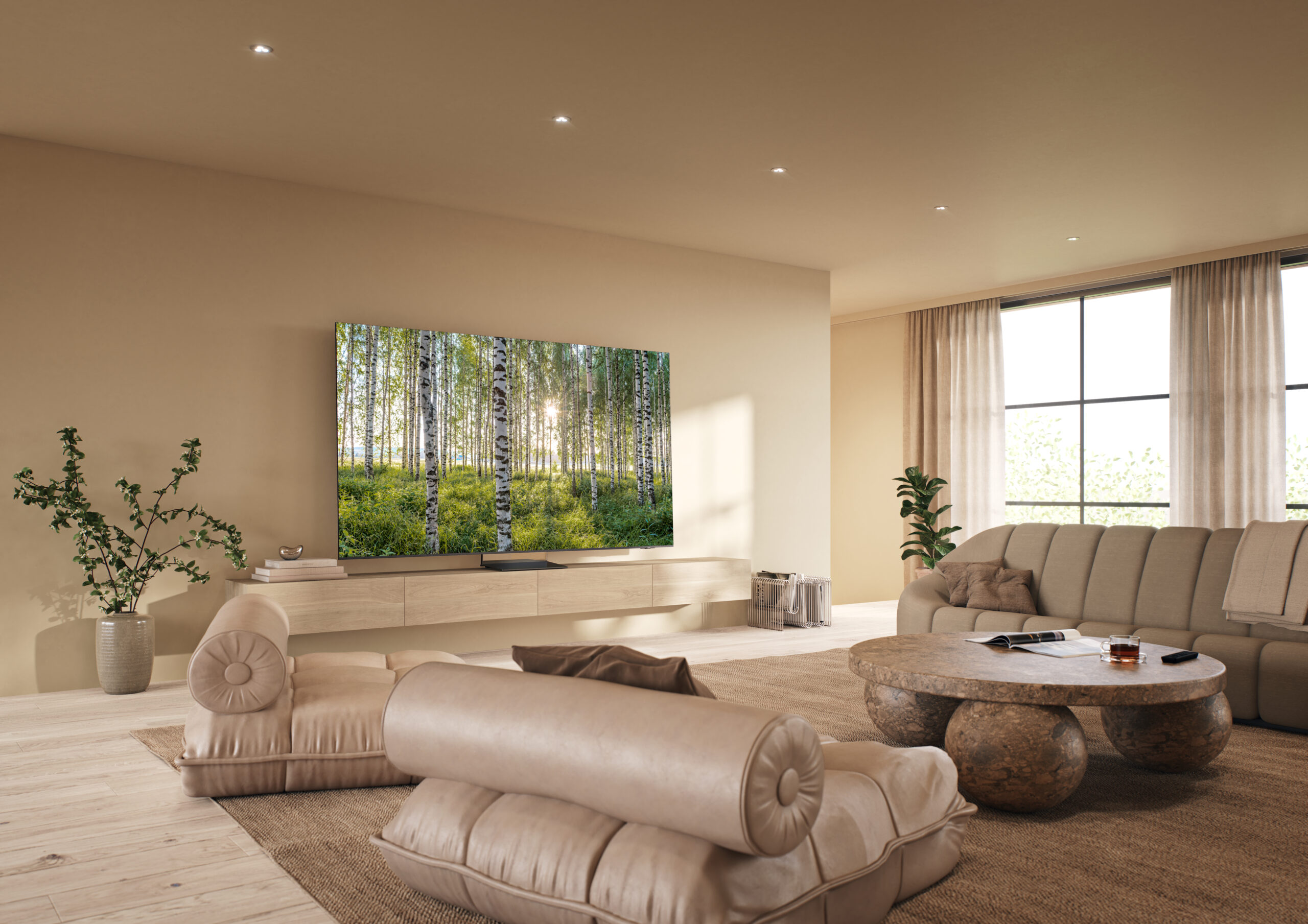
Samsung QN900D: 8K TV in the high-end class
The 8K format hasn’t been a huge success so far. The film industry is focusing almost exclusively on 4K with HDR in the future, and there’s no indication of a move to 8K resolution anytime soon. However, there are a number of YouTube videos filmed in 8K. And as soon as Netflix, Prime, MAX or other streaming services decide to focus on 8K video, interest in 8K will likely pick up again.
The other TV manufacturers don’t seem to be investing much in 8K either. Sony hasn’t launched a new 8K TV since the Z8K in 2022, and Philips, Panasonic and TCL don’t yet have any 8K TVs in their range. On the other hand, LG has a new 8K model in the pipeline, the QNED99, which will hit the market in 2024.
Samsung, on the other hand, seems to have absolute confidence in 8K resolution and continues to offer it in its top models. The lack of content doesn’t seem to be a big problem – that’s what (increasingly smart) upscaling is for!

The design
The QN900D is also a beautiful example of industrial design. The screen has a thin but strong metal frame, which allows the image to go all the way to the edges without any black stripe around it. This creates an interesting effect where the image almost seems to float in the air. The impression is only enhanced by the new stand, which is designed to be almost invisible.
The sleek and smart design is of course particularly advantageous on the 85-inch TV we’re testing. Large screens can easily become very dominant in the interior, but the slim design helps to make it less distracting. The QN900D deserves a place in the living room instead of being tucked away in a dark home cinema room.
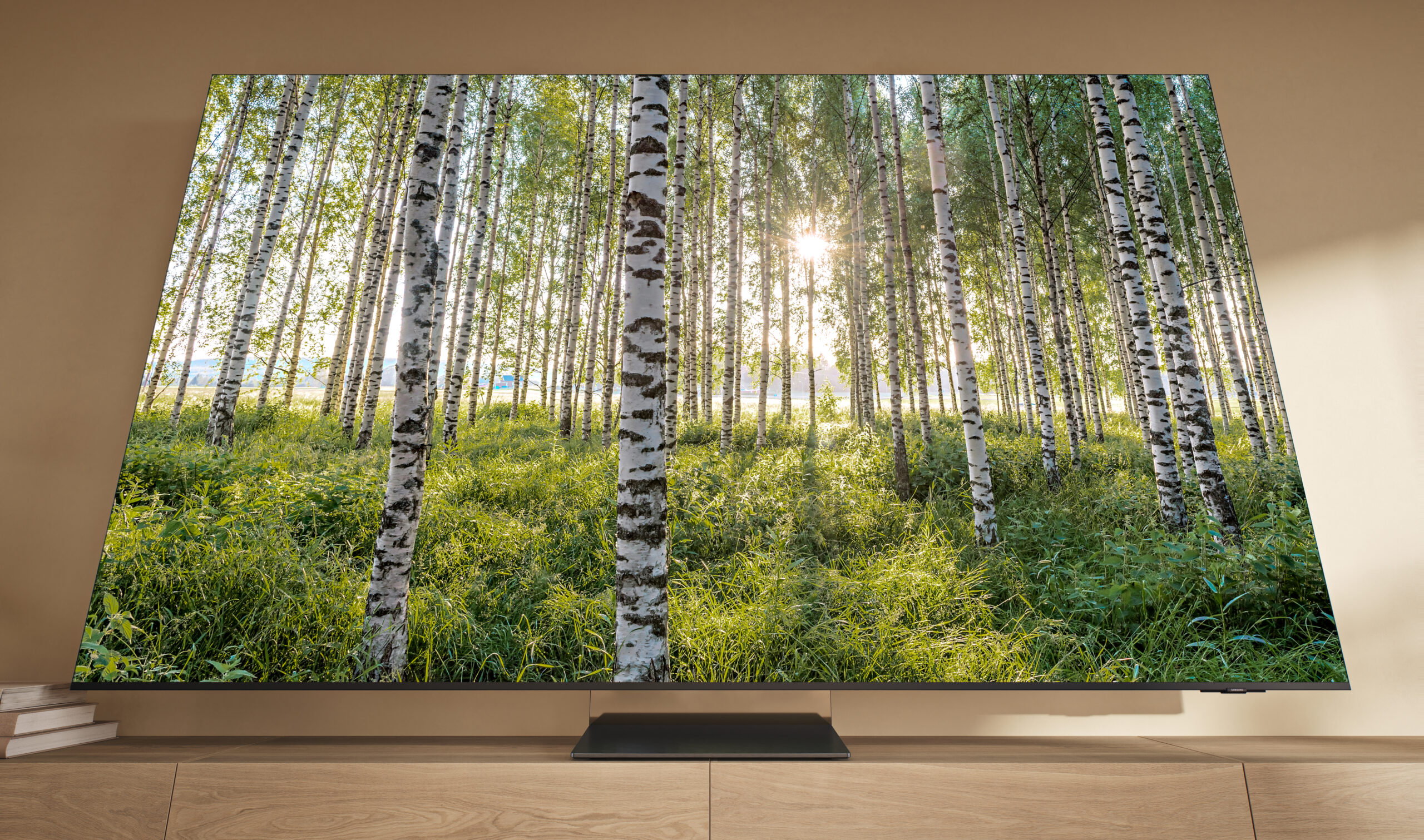
Ease of use and features
The Samsung QN900D runs the latest version of Samsung’s Tizen operating system, which provides a fast and clear user interface. It provides access to a wide range of apps and streaming services, including Samsung’s free, ad-funded TV+ service. Samsung also highlights its proprietary ‘Knox’ security system, which prevents hacking and other unpleasantness.
The QN900D also comes with One Connect, which is Samsung’s separate connection box. It allows connections and other electronics to be hidden away in a nearby shelf with just one cable up to the screen. This allows the TV to sit neatly on the table – but it’s worth noting that it looks particularly good on the wall.
The QN900D also has built-in Smart Hub features that allow it to act as the hub of the smart home with full visibility and control of lighting, shades and other Wi-Fi connected devices.
Speaking of connectivity, it’s worth mentioning that all four HDMI inputs support resolutions up to 8K/60Hz or 4K/240Hz. On the gaming front, there’s support for VRR and a plethora of subtleties with a dedicated ‘Game Hub’ full of relevant settings.
However, there is still no support for the popular Dolby Vision HDR format, only regular HDR10 and HDR10+. However, the Samsung display is equipped with powerful image processing and tone mapping to compensate for the lack of metadata.
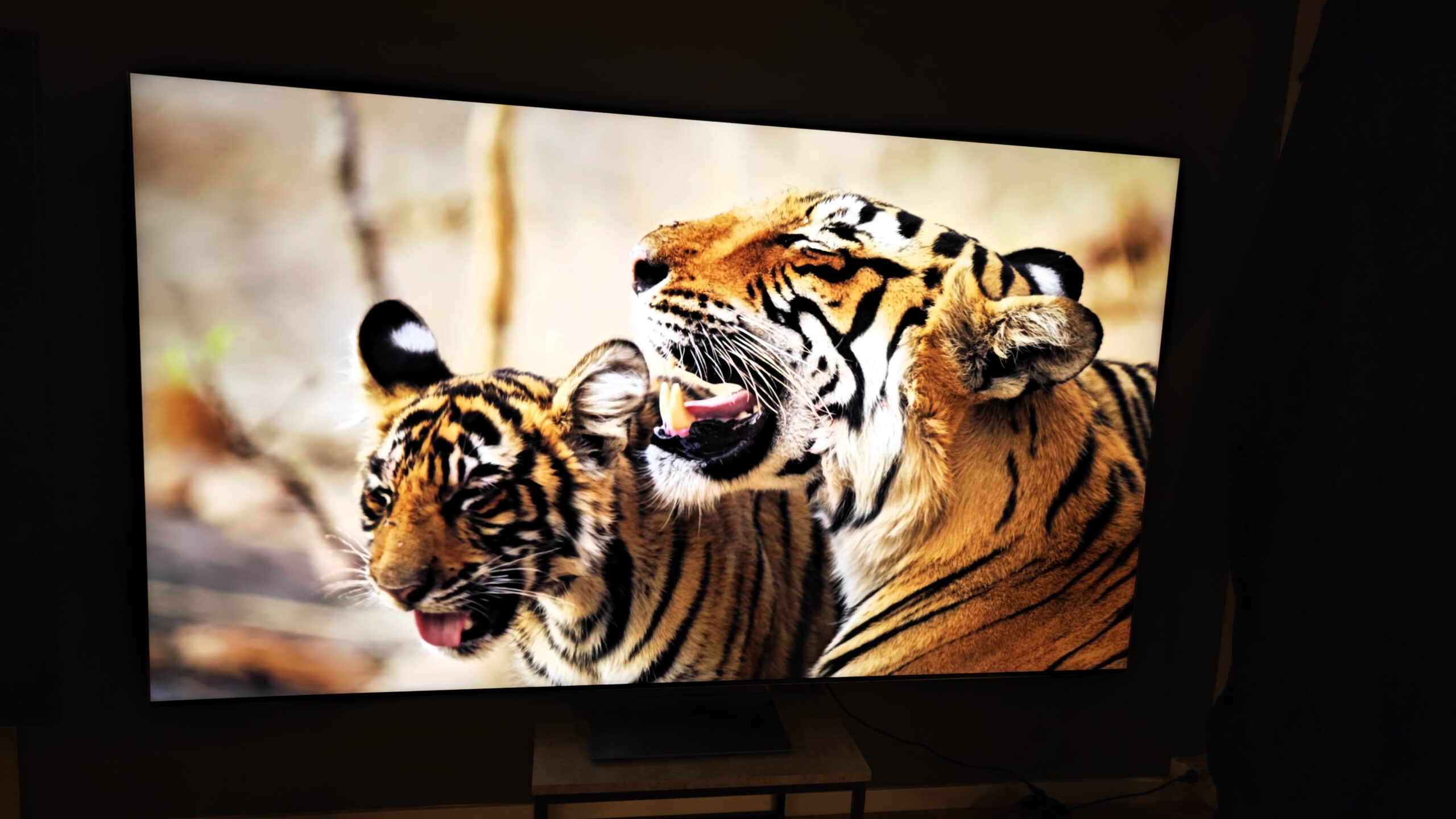
Image quality
Samsung has saved the very best image processing for its 8K models, which they still believe are in a class of their own. We’re ready to put it to the test!
When you pay this much for a high-end TV, you expect a picture out of the ordinary, and that’s what you get with the Samsung QN900D. As we saw during CES and Samsung’s own presentation in Frankfurt, this 8K display has a very potent and vibrant picture.
The first thing we noticed was that the screen appears exceptionally solid and coherent, almost regardless of the content. The 8K resolution allows the screen to achieve a very high pixel density (PPI), and with 33 million densely packed pixels, there is naturally less room for ‘black gaps’ than on a 4K screen of the same size.
The challenge arises when filling in all those missing pixels – also known as upscaling – but here Samsung has achieved a significant improvement over this year’s model. The QN900D is equipped with 8K AI Upscale Pro, where the video processor analyses the entire image and adds the missing image information using AI, instead of just copying the surrounding pixels.
The improvements are clearly visible as the image reproduction is really sharp and detailed, even when the original image has a lower resolution. Even regular Full HD looks very sharp with a convincing sense of depth.
Smooth movement
Many previous generations of 8K monitors have struggled with upscaling and moving the image at the same time, but the QN900D does a great job here too, thanks to the fact that it’s equipped with a real badass of an image engine. The image reproduction is very smooth and seamless, handling even quick pans without flickering or breaking up. This makes it an ideal TV for films, sports and other TV entertainment.
Speaking of sports, the QN900D is equipped with what Samsung calls ‘AI Motion Enhancer Pro’ and ‘Ball Detection Mode’, which can detect when you’re watching football or other ball sports. It should therefore be extra good at predicting where the ball is going and counteract flicker. However, we can’t guarantee whether it can make the goalkeeper any faster!
Accurate contrast
What about contrast? Here too, the Samsung monitor performs well and actually significantly better than last year’s QN900C model. Thanks to the finely meshed miniLED backlight, the light distribution is very precise and the QN900D is not particularly bothered by halo effects around bright objects. Whether this is due to more dimming zones or just smarter management of the existing zones, we can’t say for sure, but the improvement is obvious.
When it comes to the black level, it’s still clear that we’re dealing with an LCD panel. The QN900D has so many pixels to illuminate that it doesn’t quite manage to switch off the light in the dark areas. So while the black level is excellent, it’s not quite in the class of an OLED display like the S95C or S90C.
Samsung’s display also has plenty of brightness to offer, both for video in HDR format and regular SDR. The QN900D pumps out a respectable 1,500 nits in a 10% window, around 1,000 at 25% and down to 500 at 100% screen area.
That said, it’s not a groundbreaking brightness for an LCD display, and again we suspect it may be due to all those millions of pixels that the backlight has to pass through. In fact, Samsung’s own OLED TV S95D delivered similar nit values when we tested it recently. Which makes both it – and the Samsung QN900D – suitable for watching TV even in bright environments.
In any case, the sum of all the above qualities adds up to a TV that not only has excellent picture quality for virtually all types of content, but is also very easy to live with for most applications – and living room environments.
Sound quality
Even though the QN900D is very slim, that hasn’t stopped Samsung from mounting a large number of speakers in the screen, most of them on the back. In total, we’re talking about a speaker system with 6.2.4 channels! It sounds pretty insane in a TV without separate speakers, but is based on a high degree of virtual sound processing.
The sound may not be as impressive in practice as it looks on paper, but you can hear that this is a step up from the more affordable Samsung models. The QN900D manages to create a big soundstage that matches the size of the screen well. There’s also a good woofer for music and sound effects. Samsung has also succeeded well in placing the various sound effects where they occur in the picture, and not least the speech is strong and clear.
Most importantly, the monitor supports Dolby Atmos sound processing, which it can also share with a soundbar if connected via HDMI eARC. If you choose a compatible Samsung soundbar (e.g. Q990D), the sound can also be transmitted wirelessly.
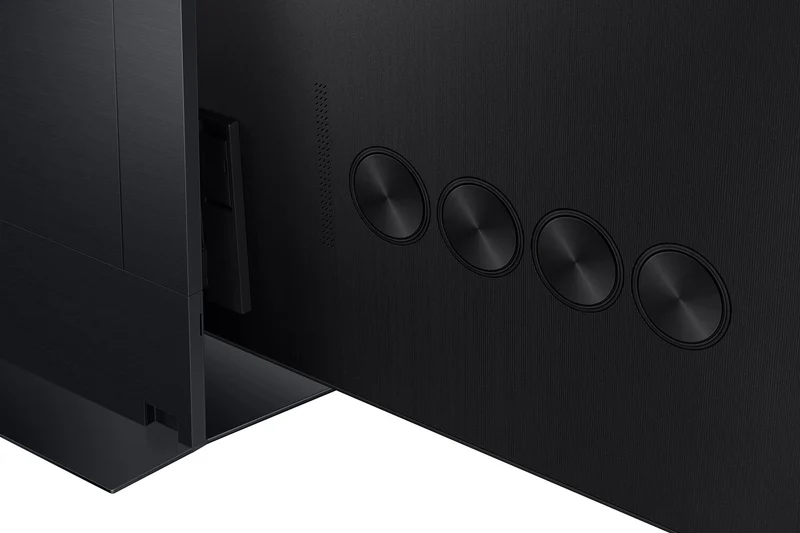
Competitors?
As fewer and fewer TV manufacturers seem to be focusing on 8K, there aren’t many direct competitors to the QN900D out there from model year 2024. On the other hand, LG will still be selling its OLED Signature Z3 from 2023 – the successor to the Z2, which we tested with excellent results last year. An OLED TV with 8K resolution is a beautiful blend of contrast and sharpness that we recommend everyone take a look at. The only downside is the price, which creeps over £100,000 for a 77-inch.
Sony hasn’t launched a new 8K TV this year, but their 2022 Z8K could be an alternative, albeit with an older MiniLED backlight (fewer dimming zones) and a slightly more bulky form factor than Samsung’s slim form.
If we are taking the resolution down to 4K, there are several competitors, not least from Samsung’s own range. We recommend taking a look at Samsung’s QN95D, which is the manufacturer’s top model in the 4K range. Keep an eye out for tests of this in the future.
And let’s not forget the TCL X955, which has impressed us with its strong contrast and dazzling brightness at a competitive price in the high-end class. However, it’s not as sleek, attractive and living room-friendly as the Samsung, nor does it have 8K resolution.
Conclusion
The QN900D is an expensive high-end model, but also delivers ‘the extra’ when it comes to picture quality, design and overall user experience. The build quality is very good and suitable for both wall and table mounting. Although there is still quite a bit of true 8K content to watch, Samsung makes up for it with powerful and advanced image processing. Combined with a bright, high-contrast miniLED backlight, the result is impressive image sharpness and clarity, as well as formidable image depth. Overall, the QN900D is one of the best TVs we’ve tested this year, and among 8K TVs it’s probably the best yet.

We think
The Samsung display delivers an unrivalled viewing experience with 8K content. Plus, the smart AI image processor does an impressive job of upscaling other types of video content. Does not support Dolby Vision. Brightness is great, but not class-leading
10999 €
Specifications
- Size/type: 85’ 8K Neo QLED/MiniLED LCD
- Resolution: 7860×4320 (8K Ultra HD)
- Panel frequency: 60-240Hz
- Operating system: Tizen
- Inputs: 4 HDMI (4 x 2.1), 3 USB
- Outputs: Optical digital audio output, HDMI eARC
- HDR: HDR10+
- Screen sizes: 65, 75, 85
- Other: 6.4.2 sound system, Separate Slim One Connect box
- Web: samsung.com
